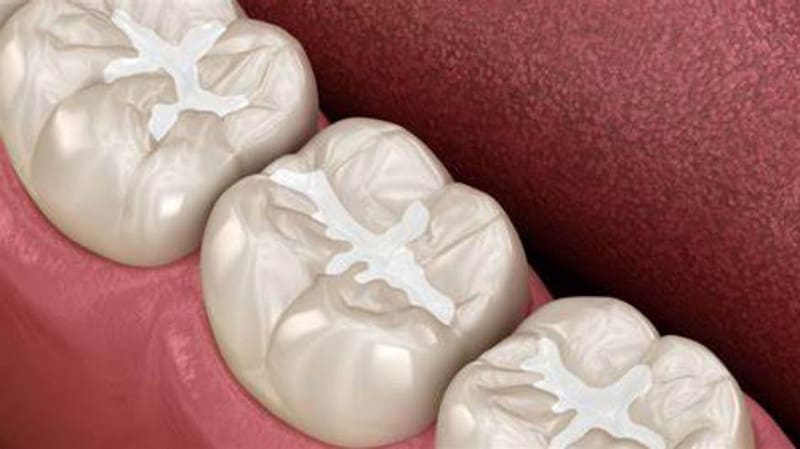
When it comes to protecting your teeth from cavities, brushing and flossing are essential—but sometimes they’re not enough. The grooves and pits on the chewing surfaces of your back teeth (molars and premolars) can be hard to clean, even with good oral hygiene. That’s where dental sealants come in.
Dental sealants are a fast, painless, and effective way to add extra protection against tooth decay. Whether you’re a parent wondering if your child should get them, or an adult looking to prevent cavities, sealants are worth learning about.
What Is a Dental Sealant?
A dental sealant is a thin, protective coating made of plastic or other dental materials. It’s applied to the chewing surfaces of your back teeth, where deep grooves tend to collect food and bacteria. Once in place, the sealant acts as a barrier, keeping out plaque and acids that can cause tooth decay.
Think of it like a raincoat for your teeth—it doesn’t replace brushing or flossing, but it adds an extra layer of protection where it’s needed most.
How Are Sealants Applied?
The process is quick, easy, and completely painless—no drilling, no numbing shots.
- The tooth is cleaned and dried.
- A special solution is applied to help the sealant bond to the tooth.
- The sealant is painted onto the chewing surface.
- A curing light is used to harden the material.
The entire process usually takes just a few minutes per tooth and can be done during a regular dental visit.
Who Should Get Dental Sealants?
Sealants are most commonly recommended for children and teens, especially once their permanent molars come in (typically around age 6 for first molars and age 12 for second molars). These early years are when teeth are most prone to cavities.
However, adults can benefit too, especially if they don’t have fillings or decay in their molars. Sealants can help protect these teeth and reduce the need for future dental work.
Why Should You Get Sealants?
Here are the top reasons dental sealants are a smart investment in your oral health:
- Prevent Cavities
Sealants protect the deep grooves and fissures in your back teeth—areas where cavities often begin. According to the CDC, sealants can reduce the risk of decay in molars by up to 80%.
- Save Money
Cavity treatment (like fillings, crowns, or root canals) can be costly. Sealants are a simple, affordable way to help avoid those more expensive procedures down the road.
- Quick and Painless
Getting sealants is one of the easiest dental procedures. There’s no discomfort involved, and it can be done in a single visit.
- Long-Lasting Protection
Sealants can last 5 to 10 years, though your dentist will check them at each visit and reapply if needed.
Are Sealants Safe?
Yes! Dental sealants are safe for both kids and adults. They’ve been used for decades and are approved by major dental and health organizations, including the American Dental Association (ADA) and the Centers for Disease Control and Prevention (CDC).
If you have concerns about materials or allergies, talk to your dentist—they can help you choose the best option for your needs.
An Extra Layer of Defense
Brushing, flossing, and regular dental checkups are essential—but dental sealants offer an extra layer of defense that can make a big difference in preventing cavities, especially in those hard-to-reach back teeth.
Whether you’re looking out for your child’s first molars or protecting your own teeth for the long haul, sealants are a smart, simple step toward a healthier smile.
Ask your dentist at your next visit if sealants are right for you or your child—you might just save a tooth (and some money) in the process!
